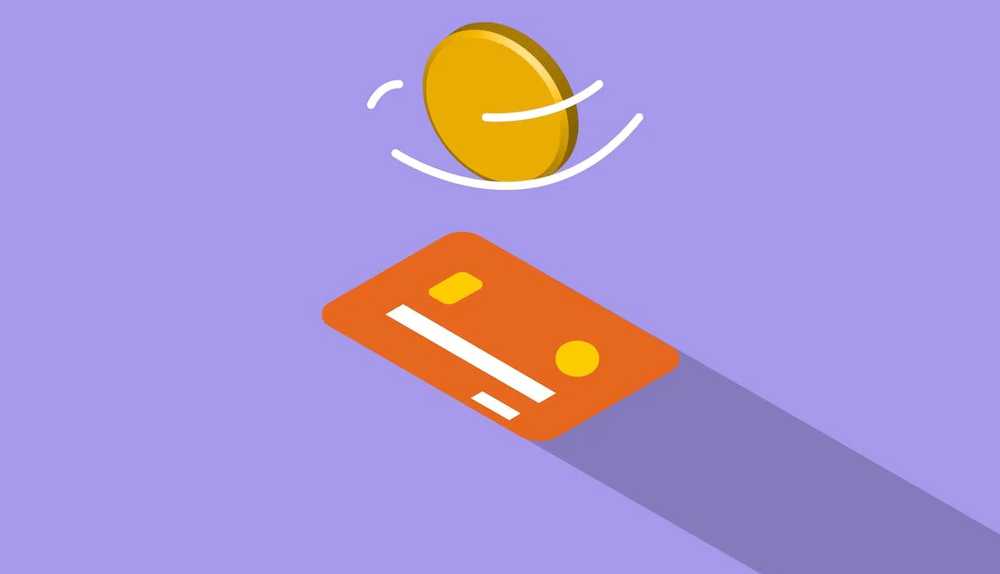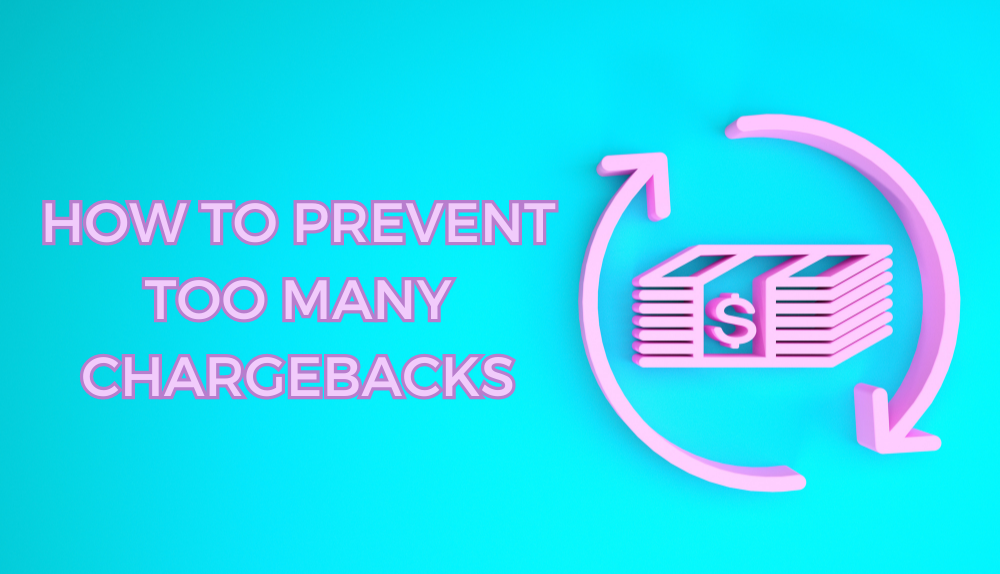
What Happens If You Get Too Many Chargebacks?
- 14th Jun, 2023
- | By max
- | Uncategorized
In the intricate e-commerce landscape, chargebacks are not merely transactional setbacks but can significantly impact a business’s financial health and reputation. Excessive chargebacks can lead to severe consequences such as blacklisting by payment processors, increased merchant fees, or even loss of payment processing capabilities. Let’s delve into the world of chargebacks, understand their implications, and explore strategies to prevent them from wreaking havoc on your business. Let us understand what happens if you get too many chargebacks.
What Happens If You Get Too Many Chargebacks? – The Impact
The chargeback ratio is a critical metric for businesses, particularly those operating in e-commerce. It is calculated by dividing the total number of chargebacks by the total number of transactions during a specific period. This ratio measures the proportion of transactions that result in a chargeback and is a key indicator of a business’s transactional health.
The industry standard for chargeback rates (1% threshold)
The industry standard for chargeback rates is typically around 1%. This means that if more than 1% of a business’s transactions result in chargebacks, it is considered to have a high chargeback rate. This threshold is not arbitrary but is set by major credit card companies like Visa and Mastercard. They monitor businesses and their chargeback ratios to ensure that businesses are maintaining healthy transaction practices.
Exceeding this 1% threshold can have severe implications for a business. High chargeback rates can lead to a business being categorized as a high-risk merchant. High-risk merchants are perceived as having a greater likelihood of chargebacks, fraud, or business failure. This categorization can lead to several potential challenges:
Increased Processing Fees: High-risk merchants often face higher payment processing fees. Payment processors do this to offset the potential risk associated with these businesses.
Account Holds or Termination: Sometimes, payment processors may hold funds or terminate the merchant account if the chargeback ratio remains high.
Difficulty in Getting Approval for Merchant Accounts: High-risk merchants may find getting approval for new merchant accounts challenging. Many banks and payment processors may be reluctant to work with businesses categorized as high-risk.
Potential for Blacklisting: In extreme cases, businesses with high chargeback rates may be added to the MATCH list (Member Alert to Control High-Risk Merchants), effectively blacklisting them in the payment processing industry.
Given these potential consequences, businesses should strive to keep their chargeback ratios below the 1% threshold. This can be achieved through various strategies, including proactive fraud prevention, excellent customer service, clear communication about products and services, and an easy-to-understand return policy.
Consequences of Excessive Chargebacks
Excessive chargebacks can have severe consequences for businesses, particularly those that rely heavily on card transactions. Here are some of the potential outcomes:
Blacklisting by Merchant Providers: If a business consistently has a high chargeback rate, it may be blacklisted by merchant account providers. This means the business is flagged as high-risk, making it difficult to find a reliable payment processing company willing to handle its transactions. Blacklisting can severely limit a business’s ability to operate, especially if it relies heavily on credit card payments.
Inclusion in the Terminated Merchant File (TMF): The Terminated Merchant File, also known as the MATCH (Member Alert to Control High-risk Merchants) list, is a database maintained by Mastercard. It contains information about businesses and owners whose merchant accounts have been terminated. If a business is added to this list, securing a new merchant account can be extremely difficult. Being on the TMF is a red flag to potential processors about the business’s high-risk status. A business can remain on the TMF for at least five years, during which time it may face significant operational and financial challenges.
Loss of Payment Processing Privileges: In extreme cases, a business with excessive chargebacks may lose its payment processing privileges entirely. This can happen if the business’s merchant account is terminated due to high chargeback rates and it cannot secure a new one due to being on the TMF. Losing the ability to process card payments can be devastating for a business, as it effectively prevents it from conducting transactions online or over the phone. This can lead to a significant loss of revenue and potentially even business closure.
Given these potential consequences, businesses must take steps to minimize chargebacks. This can involve implementing robust fraud detection measures, providing excellent customer service, and ensuring clear and transparent communication with customers about their purchases.
Visa and Mastercard Chargeback Thresholds
Visa and Mastercard, two of the world’s largest credit card networks, have established specific thresholds for chargebacks to monitor and manage business risk. These thresholds are part of their efforts to maintain a secure and reliable payment ecosystem.
Visa’s Chargeback Thresholds and Dispute Monitoring Program (VDMP)
Visa employs the Visa Dispute system to oversee merchants experiencing significant chargeback rates. The program, known as VDMP, encompasses multiple tiers linked to the monthly volume of disputes a business encounters. Should a merchant surpass Visa’s predetermined monthly chargeback threshold, they will be enrolled in the VDMP.
The key figure for Visa is the chargeback rate, calculated by dividing the chargebacks received in a month by transactions made in the same month. For example, if a business gets 100 chargebacks in June and processes 10,000 transactions during the same period, the chargeback rate for June would be 1%. This would put the business over the VDMP Standard chargeback threshold limit.
Mastercard’s Chargeback Thresholds and Excessive Chargeback Merchant Program (ECM)
Mastercard operates a similar program called the Excessive Chargeback Merchant Program (ECM). Like Visa, Mastercard has multiple tiers for its chargeback threshold, and number of chargebacks a business can have before being considered excessive depends on the business’s pre-existing merchant risk level.
Mastercard calculates the chargeback rate in a different from Visa. For Mastercard, the number of first chargebacks filed in the current month is divided by the transactions made in the previous month. So, if a business receives 100 chargebacks in June and processes 10,000 transactions in May, the chargeback rate for June would be 1%.
Both Visa and Mastercard’s programs aim to control merchant chargeback issuances, and businesses that exceed the thresholds may face punitive fees, operating restrictions, and costly periodic reviews. Therefore, businesses must monitor their chargeback rates closely and take steps to minimize chargebacks to stay below these thresholds.
Financial Implications
Excessive chargebacks can lead to significant financial implications for businesses. Two of the most notable impacts are the implementation of rolling reserves and the potential for higher merchant fees.
Rolling Reserves
Rolling reserves are a risk management strategy used by acquiring banks to protect themselves from potential losses due to chargebacks. If a business has a high chargeback rate, the acquiring bank may decide to hold a certain percentage of the business’s transaction volumes as a reserve. Typically between 5% to 15%, this percentage is held for a predetermined period, often 180 days.
The purpose of this reserve is to cover any potential losses from future chargebacks. While this provides a safety net for the bank, it can significantly impact the business’s cash flow, as some of its revenue is held back and not immediately available.
Higher Merchant Fees
Businesses with high chargeback rates may be categorized as high-risk merchants. High-risk merchants often face higher fees from payment processors. These higher fees are intended to offset the increased risk associated with these businesses.
In some cases, businesses with high chargeback rates may need to apply for high-risk merchant accounts. These accounts are specifically designed for high-risk businesses due to factors such as their industry, business model, or chargeback history. High-risk merchant accounts often come with higher fees and stricter terms than standard merchant accounts, which can increase the cost of processing transactions and potentially impact profitability.
These financial implications underscore the importance of maintaining a low chargeback rate. Businesses should implement effective chargeback management and prevention strategies to minimize chargebacks and avoid these potential financial impacts.
Strategies to Avoid Chargebacks
Maintaining a low chargeback rate is crucial for a business’s financial health and reputation. High chargeback rates can lead to increased fees, loss of payment processing capabilities, and even blacklisting. Therefore, implementing effective strategies to prevent chargebacks is essential. Here are some strategies that businesses can employ:
Offer Clear Refund Policies: A clear, easy-to-understand, and easily accessible refund policy can help prevent chargebacks. If customers understand that they can easily return a product, cancel a service, and receive a refund, they may be less likely to file a chargeback.
Provide Excellent Customer Service: Prompt and effective customer service can resolve many issues before they escalate to a chargeback. If a customer has a problem with a product or service, they should be able to contact the business and resolve their issue efficiently.
Use Detailed Descriptors: Customers should recognize the transaction quickly When they see their credit card statement. A clear and detailed descriptor for each transaction can help prevent chargebacks caused by customers not recognizing a charge.
Remind Customers of Recurring Payments: If a business offers a subscription service or any other type of recurring payment, it’s important to remind customers before each payment is processed. This can help prevent chargebacks from customers who forgot about the recurring charge.
Implement Robust Fraud Prevention Measures: Advanced fraud detection and prevention tools can help identify and prevent fraudulent transactions before they occur, reducing the likelihood of chargebacks.
Proactive Communication: Keep your customers informed about their order status. If there are any delays or issues, let the customer know immediately. This can help manage customer expectations and prevent disputes.
While these strategies can significantly reduce the likelihood of chargebacks, it’s important to remember that each business is unique. Therefore, businesses should develop a comprehensive chargeback prevention strategy tailored to their specific circumstances, including their industry, customer base, and products or services.
Importance of proactive chargeback management to protect the business
To manage and reduce chargebacks, businesses should implement proactive and comprehensive chargeback prevention strategies. These strategies can include offering clear refund policies, providing excellent customer service, using detailed transaction descriptors, reminding customers of recurring payments, and implementing robust fraud prevention measures.
In the ever-evolving e-commerce landscape, proactive chargeback management is not just a good practice but a necessity. By understanding the chargeback process, monitoring chargeback rates, and implementing effective prevention strategies, businesses can protect themselves from excessive chargebacks’ potential risks and consequences.
Conclusion
Excessive chargebacks can pose significant challenges for businesses, including financial losses, increased operational costs, potential blacklisting by merchant providers, and even the loss of payment processing privileges. These consequences can be severe, affecting a business’s cash flow, operational efficiency, and overall reputation.



